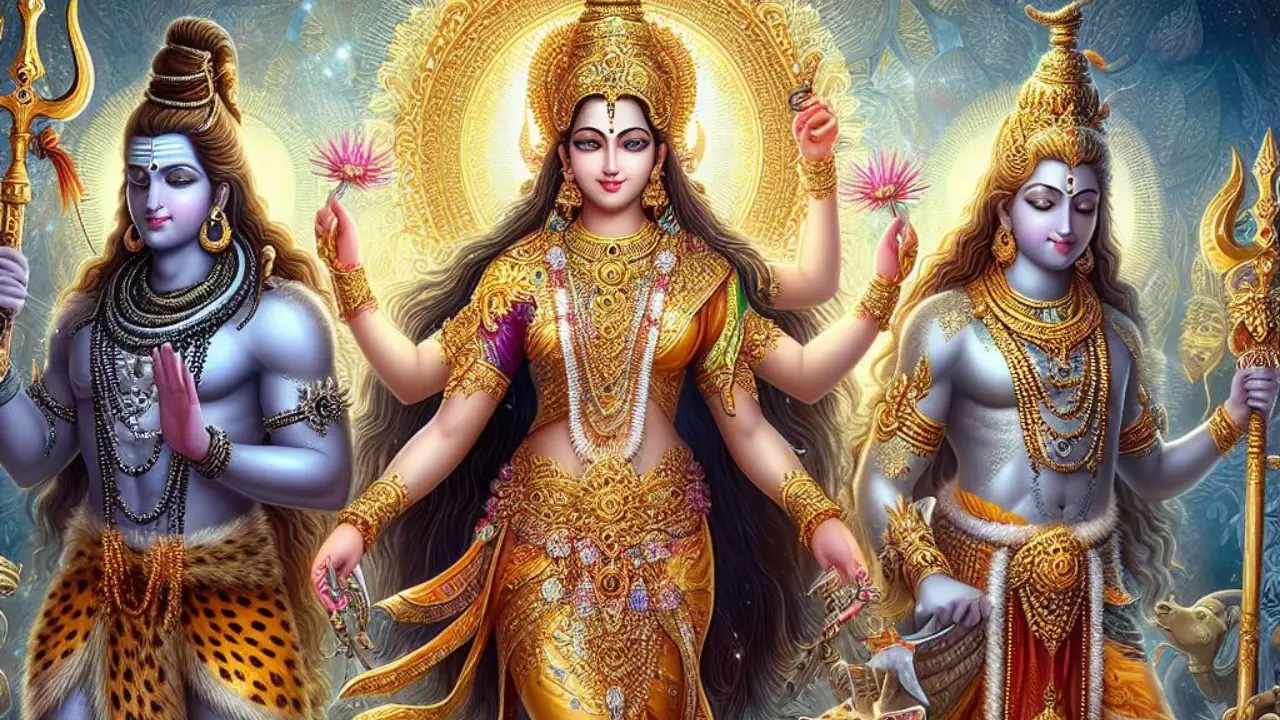In the vast and intricate tapestry of Hindu mythology, the Goddess Shakti stands as a symbol of power, energy, and creative force. Throughout the ages, she has been revered and worshipped, often seen in union with three primary male deities: Shiva, Vishnu, and Brahma. These divine consort relationships are not only fascinating but also embody profound spiritual significance. Join us on an enthralling journey as we delve into the captivating mythology behind Goddess Shakti’s divine consorts.
Shakti and Shiva: The Dynamic Dance of Creation and Destruction
The union of Goddess Shakti with Lord Shiva represents the eternal cosmic dance, wherein the masculine and feminine energies converge to create, preserve, and ultimately destroy the universe. This celestial dance, known as the Tandava, symbolizes the rhythm of life, and it is believed that when Shakti and Shiva come together, the world experiences harmony and balance. The graceful yet powerful expressions of Shakti and the tranquil, meditative nature of Shiva create a cosmic synergy that sustains the cycle of life.
Shakti and Vishnu: The Preservation of Cosmic Order
When Goddess Shakti merges with Lord Vishnu, the preserver of the universe, a divine synergy emerges. Vishnu’s nurturing and protective qualities complement Shakti’s dynamic energy, ensuring the continuity and harmony of creation. This union highlights the importance of preservation in the grand cycle of life. It signifies that the divine feminine is not only a force of transformation and renewal but also a stabilizing influence in maintaining the cosmic order.
Shakti and Brahma: The Genesis of Life and Knowledge
Goddess Shakti’s association with Lord Brahma, the creator of the universe, represents the inception of life and knowledge. It is through this union that the cosmos begins to take shape, and wisdom flows into existence. This relationship symbolizes the intertwining of feminine and masculine principles to bring forth enlightenment. The union of Shakti and Brahma signifies the infinite potential of creation that springs from the union of divine energies.
The Significance of Shakti’s Consorts in Hindu Culture
Ardhanarishvara:
The embodiment of half-feminine and half-masculine form, Ardhanarishvara, is a powerful representation of the inseparability of Shakti and her consorts. This form underscores the idea that the male and female energies are interdependent and necessary for cosmic equilibrium. The Ardhanarishvara form is a profound reminder that the divine exists in both masculine and feminine aspects, promoting gender equality and balance.
Mahashivratri:
This auspicious festival celebrates the marriage of Lord Shiva and Goddess Shakti. Devotees observe it with reverence, fasting, and night-long vigils to honor the union of the cosmic forces that sustain existence. Mahashivratri serves as a time for devotees to reflect on the importance of inner unity, acknowledging the interplay of energies within themselves and the world around them.
Navratri:
During this nine-night festival, the nine divine aspects of Goddess Shakti are worshipped. Each day represents a different form of the Goddess, emphasizing her diverse roles and qualities in relation to her consorts. Navratri highlights the multifaceted nature of the divine feminine, instilling devotion, strength, and courage in her devotees.
The Philosophical Essence of Shakti’s Consorts
The relationships of Goddess Shakti with Shiva, Vishnu, and Brahma hold profound philosophical teachings that transcend time and cultural boundaries:
Unity in Diversity:
The union of Shakti and her consorts emphasizes the underlying unity that connects all aspects of creation. It teaches us to embrace diversity and recognize the interconnectedness of life. Just as each deity represents different aspects of the universe, every living being is an essential part of the cosmic web.
Balance and Harmony:
The cosmic dance of creation, preservation, and destruction signifies the cyclical nature of existence. It reminds us to accept change, find harmony amidst chaos, and appreciate the flow of life. By understanding the impermanence of all things, we can find peace and contentment in the ever-changing world.
The Power of Feminine Energy:
Shakti’s divine consorts relationships signify the empowerment of feminine energy. They emphasize the importance of acknowledging and revering the divine feminine, recognizing its strength and nurturing attributes. This acknowledgment extends beyond the deities themselves and serves as a reminder of the essential role women play in society and spirituality.
Conclusion:
The mythology surrounding Goddess Shakti’s divine consorts—Shiva, Vishnu, and Brahma—is a captivating journey into the heart of Hindu spirituality. Through these divine unions, we learn the importance of balance, unity, and the inherent power of feminine energy. As we celebrate the cosmic dance of creation, preservation, and destruction, we are reminded of the eternal interconnectedness that sustains the universe.
In embracing the profound spiritual significance of these unions, we find wisdom that guides us towards a more harmonious existence. The divine consort relationships of Goddess Shakti symbolize the ultimate unity that encompasses all aspects of creation. It urges us to seek balance, celebrate diversity, and recognize the power of the divine feminine in shaping the world we live in.

